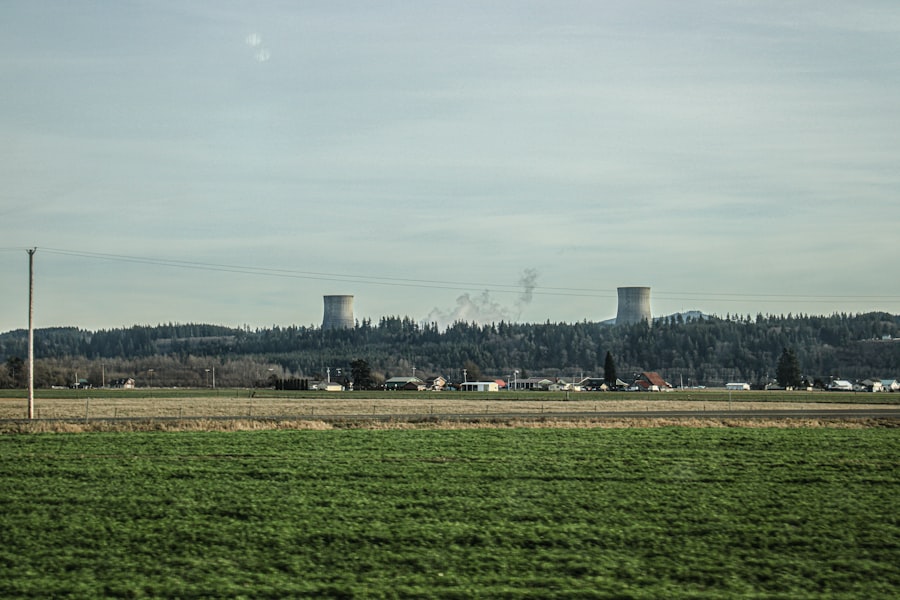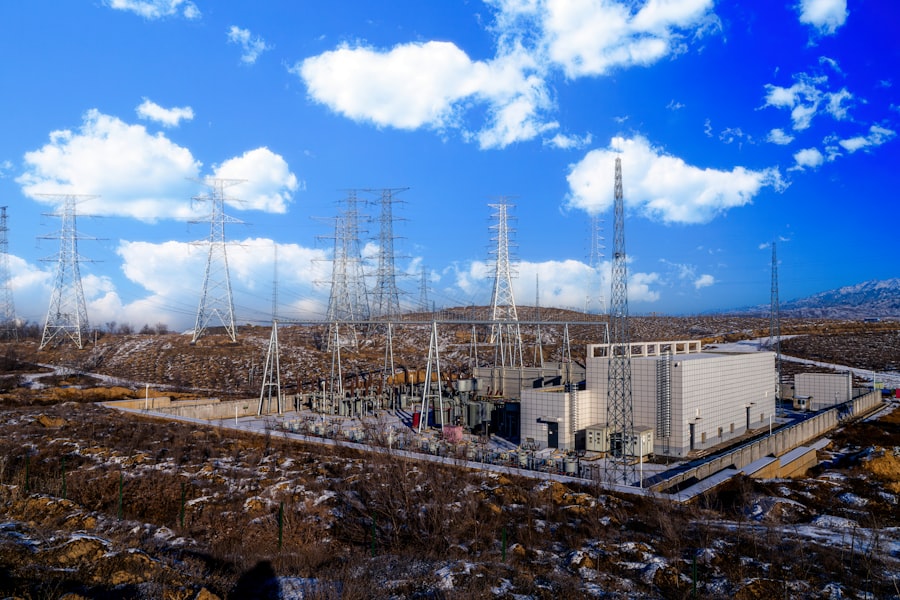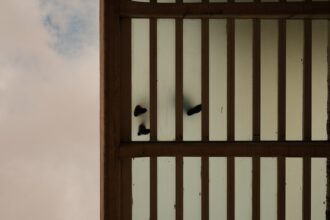The S1W reactor, a significant milestone in the evolution of nuclear technology, stands as a testament to the ingenuity and ambition of its creators. Located at the Naval Reactors Facility in Idaho, this landlocked reactor was designed primarily for the United States Navy’s submarine program. Its development marked a pivotal moment in the quest for efficient and powerful propulsion systems for naval vessels.
The S1W reactor not only served as a prototype for future submarine reactors but also played a crucial role in advancing the understanding of nuclear energy applications in maritime contexts. The significance of S1W extends beyond its immediate operational capabilities. It represents a confluence of military necessity and technological innovation, showcasing how the demands of naval warfare can drive scientific progress.
As the world entered the nuclear age, the S1W reactor emerged as a beacon of potential, illuminating the path toward more sophisticated and reliable nuclear propulsion systems. This article delves into the history, design, operational challenges, and lasting impact of the S1W reactor, highlighting its contributions to both military and civilian nuclear technology.
Key Takeaways
- S1W was a pioneering landlocked nuclear reactor that played a significant role in the development of nuclear technology for naval warfare.
- The birth of S1W marked a crucial milestone in the history of nuclear technology, as it was the first landlocked reactor designed specifically for naval propulsion.
- The design and construction of S1W involved innovative engineering and technological advancements to meet the stringent requirements of naval applications.
- Testing and commissioning of S1W were critical phases that demonstrated the reliability and safety of the reactor for use in naval vessels.
- S1W’s operational history showcased its effectiveness and reliability, contributing to its enduring legacy in the field of nuclear technology for naval warfare.
The Birth of S1W: A Landlocked Reactor
The inception of the S1W reactor can be traced back to the early 1950s when the United States Navy recognized the need for a new class of submarines that could operate stealthily and efficiently. The Cold War was intensifying, and the Navy sought to enhance its underwater capabilities to maintain a strategic advantage over potential adversaries. In response to this pressing need, the Atomic Energy Commission (AEC) collaborated with various engineering firms to develop a prototype reactor that would meet the specific requirements of submarine propulsion.
The decision to create a landlocked reactor was driven by practical considerations. By situating the S1W reactor at a secure facility in Idaho, engineers could conduct extensive testing and research without the logistical challenges associated with maritime operations. This strategic choice allowed for a controlled environment where scientists and technicians could refine their designs and methodologies.
The birth of S1W was not merely an engineering endeavor; it was a response to geopolitical realities that demanded innovative solutions in naval warfare.
Design and Construction of S1W: A Landlocked Reactor

The design phase of the S1W reactor was marked by rigorous analysis and innovative engineering solutions. The reactor was conceived as a pressurized water reactor (PWR), which utilized water as both a coolant and a neutron moderator. This design choice was pivotal, as it allowed for efficient heat transfer and enhanced safety features.
The facility was equipped with state-of-the-art technology, reflecting the cutting-edge nature of nuclear research at the time.
As construction progressed, challenges arose, including material selection and safety considerations. However, these obstacles were met with determination and ingenuity, resulting in a reactor that would set new standards for naval propulsion systems.
Testing and Commissioning of S1W: A Landlocked Reactor
| Testing and Commissioning Metrics | Results |
|---|---|
| Pressure Testing | Successful |
| Temperature Testing | Within acceptable range |
| Control System Commissioning | Completed |
| Safety System Testing | Passed all criteria |
Once construction was completed, the S1W reactor entered a critical phase of testing and commissioning. This stage was essential for ensuring that all systems functioned as intended and that safety protocols were rigorously followed. Engineers conducted a series of tests to evaluate the reactor’s performance under various conditions, simulating real-world scenarios that a submarine might encounter during its operations.
The commissioning process involved meticulous monitoring of the reactor’s systems, including its cooling mechanisms and control rods. Engineers worked tirelessly to identify any potential issues before the reactor could be deemed operational. The successful completion of these tests marked a significant milestone in the development of nuclear propulsion technology, paving the way for future advancements in submarine design and operation.
Operational History of S1W: A Landlocked Reactor
Following its commissioning, the S1W reactor became an integral part of the United States Navy’s nuclear submarine program. It served as a prototype for several classes of submarines, providing invaluable data on reactor performance and reliability. Throughout its operational history, S1W underwent numerous modifications and upgrades to enhance its efficiency and safety features.
The reactor’s operational life spanned several decades, during which it contributed significantly to naval capabilities. It provided power not only for propulsion but also for onboard systems, enabling submarines to operate stealthily for extended periods without surfacing. The success of S1W laid the groundwork for subsequent reactors, influencing design choices and operational strategies in naval warfare.
Contributions of S1W: A Landlocked Reactor to Nuclear Technology

The contributions of the S1W reactor extend far beyond its immediate applications in naval warfare. It played a crucial role in advancing nuclear technology as a whole, providing insights into reactor design, safety protocols, and operational efficiency. The knowledge gained from operating S1W informed subsequent developments in both military and civilian nuclear reactors.
One of the most significant contributions of S1W was its role in establishing safety standards for nuclear reactors. The rigorous testing and operational experience gained from S1W helped shape regulatory frameworks that govern nuclear energy today. Additionally, innovations developed during its operation influenced civilian applications, leading to advancements in power generation that continue to benefit society.
Challenges Faced by S1W: A Landlocked Reactor
Despite its successes, the S1W reactor faced numerous challenges throughout its operational history. One significant issue was maintaining safety standards in an evolving technological landscape. As new materials and designs emerged, engineers had to adapt existing systems to ensure continued safety and reliability.
This required ongoing research and development efforts to address potential vulnerabilities. Another challenge was managing public perception of nuclear technology. As concerns about nuclear safety grew during the latter half of the 20th century, the Navy faced scrutiny regarding its use of nuclear reactors in submarines.
The S1W reactor became emblematic of these concerns, prompting efforts to enhance transparency and communication about safety measures and operational protocols.
Decommissioning and Legacy of S1W: A Landlocked Reactor
As with all technological advancements, there comes a time when systems must be decommissioned. The S1W reactor was officially decommissioned in 1982 after nearly three decades of service. The decommissioning process involved careful planning and execution to ensure that all radioactive materials were safely managed and that environmental impacts were minimized.
The legacy of S1W endures long after its decommissioning. It remains a symbol of innovation in nuclear technology and serves as a reminder of the importance of rigorous safety standards in energy production. The lessons learned from S1W continue to inform current practices in both military and civilian nuclear sectors, ensuring that future generations benefit from its pioneering contributions.
Impact of S1W: A Landlocked Reactor on Naval Warfare
The impact of the S1W reactor on naval warfare cannot be overstated. By providing submarines with reliable nuclear propulsion systems, it revolutionized underwater combat capabilities. Submarines powered by S1W could remain submerged for extended periods without surfacing for fuel or air, allowing them to conduct stealthy operations undetected by adversaries.
This shift in naval strategy fundamentally altered the dynamics of maritime warfare during the Cold War era. The ability to deploy nuclear-powered submarines equipped with advanced weaponry gave the United States a strategic advantage over potential adversaries. The influence of S1W on naval warfare extended beyond its operational capabilities; it also shaped military doctrine and strategic planning for decades to come.
S1W: A Landlocked Reactor’s Influence on Future Nuclear Reactor Designs
The innovations introduced by the S1W reactor have had a lasting influence on future nuclear reactor designs across various applications. Its compact design and efficient use of space set new benchmarks for subsequent reactors, particularly those intended for military use. Engineers learned valuable lessons about balancing power output with safety considerations, which have been integrated into modern reactor designs.
Moreover, the advancements made during the development and operation of S1W have informed civilian nuclear power generation as well. Many principles established through research on S1W have been adopted in commercial reactors worldwide, contributing to safer and more efficient energy production methods that continue to evolve today.
S1W’s Enduring Legacy
In conclusion, the S1W reactor stands as a landmark achievement in nuclear technology and naval warfare history. Its development marked a turning point in submarine design, enabling unprecedented capabilities that reshaped military strategy during the Cold War era. The contributions made by S1W extend beyond its operational life; they have influenced both military applications and civilian energy production practices.
As society continues to grapple with energy challenges and seeks sustainable solutions, the legacy of S1W serves as a reminder of the potential inherent in nuclear technology when approached with rigor and responsibility. Its story is one of innovation, adaptation, and enduring impact—a narrative that will resonate for generations as humanity navigates the complexities of energy production in an ever-changing world.
The story of the S1W landlocked reactor, a pivotal development in naval nuclear propulsion, is a fascinating chapter in military and technological history. For those interested in exploring more about the intricacies of military advancements and strategic innovations, a related article can be found on the War Room website. This article delves into various aspects of military technology and strategy, providing a broader context to the significance of the S1W reactor. You can read more about these topics by visiting this article on the War Room website.
WATCH THIS! America’s Nuclear Navy Was Born From Espionage
FAQs
What is the S1W Landlocked Reactor?
The S1W Landlocked Reactor was a prototype nuclear reactor built by the United States Navy in the 1950s. It was used for testing and training purposes for naval personnel.
Where was the S1W Landlocked Reactor located?
The S1W Landlocked Reactor was located at the Naval Reactors Facility in Idaho, USA.
What was the purpose of the S1W Landlocked Reactor?
The S1W Landlocked Reactor was used to train naval personnel in the operation and maintenance of nuclear reactors for use in submarines and other naval vessels.
When was the S1W Landlocked Reactor in operation?
The S1W Landlocked Reactor was in operation from 1958 to 1989.
What was the significance of the S1W Landlocked Reactor?
The S1W Landlocked Reactor played a crucial role in the development of nuclear propulsion for naval vessels, particularly submarines, and contributed to the advancement of nuclear technology for military applications.




